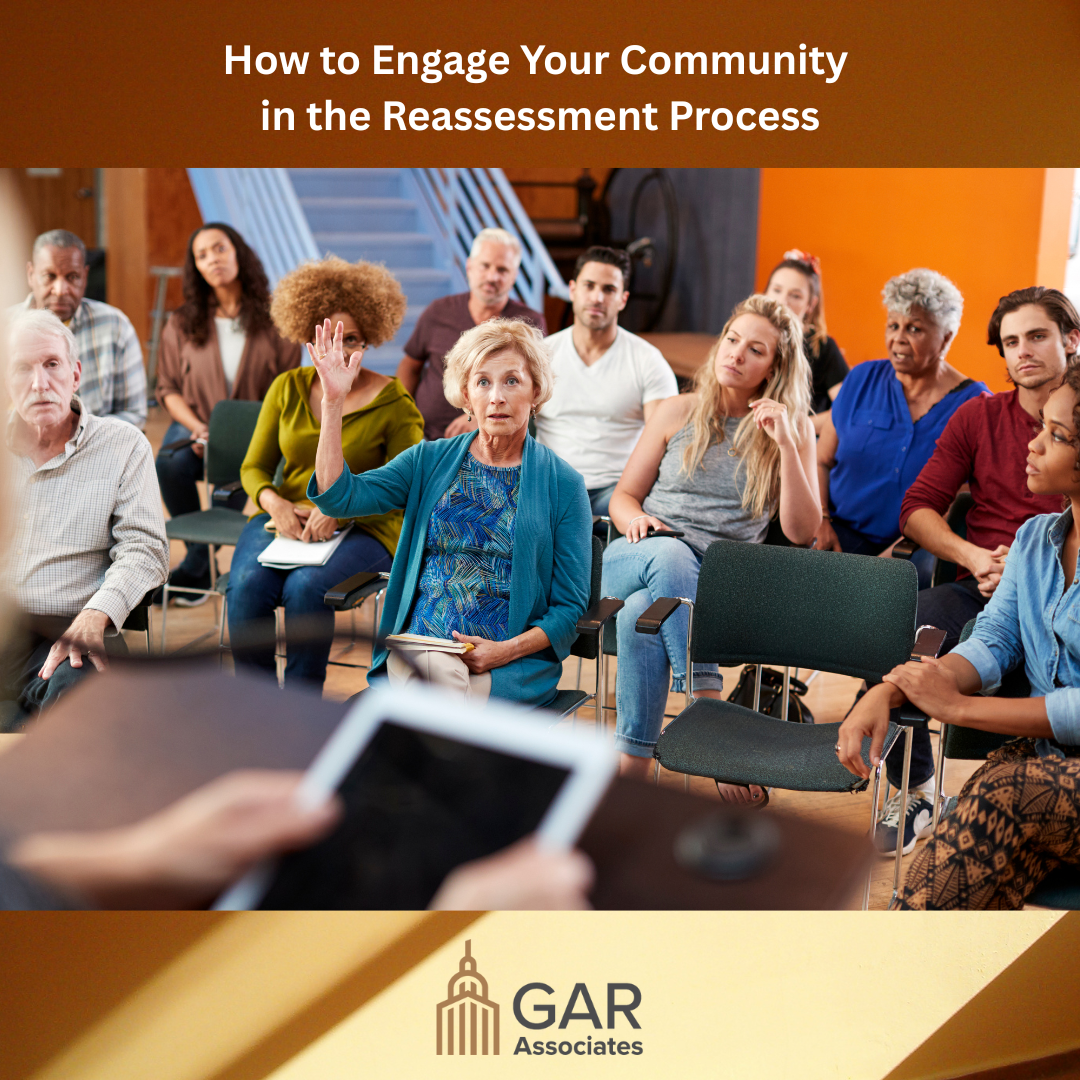By GAR Member Cindy Baire
I am often asked why some communities reassess properties on a regular basis and others do not. Besides the typical answers of budgetary issues, fear of political backlash, and, “Well, no one is complaining,” other responses include, the town board or city council members will not support it: “I am running for re-election. There is no way I am brining this up.”
I have asked some supervisors how they respond to fellow colleagues who ask they why do you do reassessments. Their very direct answer is: “It is fairness to our property owners.”
One of the best ways to introduce the concept of reassessment to a community is education and communication.
One particular mayor took the initiative to reach out to the community and hold a series of public workshops on the subject. His fellow council members did not think it was time to initiate such a project because there was a rise in market values in their community.
A series of public educational presentations were completed with hundreds of property owners participating. This mayor hired GAR Associates to assist in the presentation. The majority of participants were very interested in learning how the process works, and of course, would their taxes increase.
After the presentation, not all property owners were convinced, but many left with a better understanding of how reassessment works. Most understand that no new taxes are raised simply by completing a reassessment. Some even spoke up and said their assessment was higher than neighbors that have the same type of house.
While the council still didn’t think it was the best time to complete this project, more property owners received factual and proper information.
I have worked with communities who organized ad-hoc committees made up of citizens in the community to meet regularly with the assessor and contractor. These committee meetings provide project updates, discuss concerns they may be hearing from property owners, and answer any questions they may have. These individuals can then return to the community and report on our meetings.
The use of community based social media pages can be a good resource for disseminating proper information, however, it is best not to engage in disrespectful conversations. We have asked individuals with complaints to reach out to us directly so we can discuss their concerns rather than trying to solve them on-line.
I have attended numerous town board and city council meetings to answer questions from leadership and property owners. In fact, during the late 1990s and early 2000s, we actually held public educational workshops instructing property owners how to challenge their assessment if they believed it to be incorrect. The goal was to remove some of the intimidation factors of protesting their assessment. Some assessors called us crazy – why would you stir up the pot? We believe that property owners that truly have an error in their assessed value should be addressed. Fairness and equality are the goal of each project.
Today more web-based educational tools are available to property owners regarding the reassessment process – what it is and what it is not. Examples are web videos, case studies, important dates to remember, and links to resources.
Municipal user-friendly websites with property assessment information, including sales activity, are critical in fostering transparency. Property owners are encouraged to review property information, which is public data.
Providing a toll-free phone number for property owners to ask questions and get accurate information and assistance is important in the overall communication plan of a project.
Municipal leaders while eager to address property owner concerns during reassessment projects, should bring concerns to the assessor and the contractor to provide accurate and purposeful answers. I know no elected official in my experience that lost an election because of a reassessment.
During election seasons, some politicians may try to use not supporting reassessment as a platform when the reality what they are really saying is they are not in favor of fair and equitable distribution of the tax burden. Yes, some property owners will pay more after a reassessment, however others will pay less. Reassessment is merely a redistribution of the tax burden.
The best advice to engage a community in the reassessment process, stay open and transparent. Provide educational resources to the community and the town boards and city councils. Implement a web-based user-friendly website of real property assessment and sales information. Post updates on the project regularly. Let the assessor and contractor answer questions and concerns. Hire the right contractor to assist in the project. Maintain the investment in the project and keep property assessments current so property owners do not need to feel the sticker shock of huge increases in their property assessments.
Finally, don’t avoid reassessment because of the perceived negative outcomes when in actuality focus on what is fair to all property owners in the community. Avoiding the issue doesn’t solve the problem.





